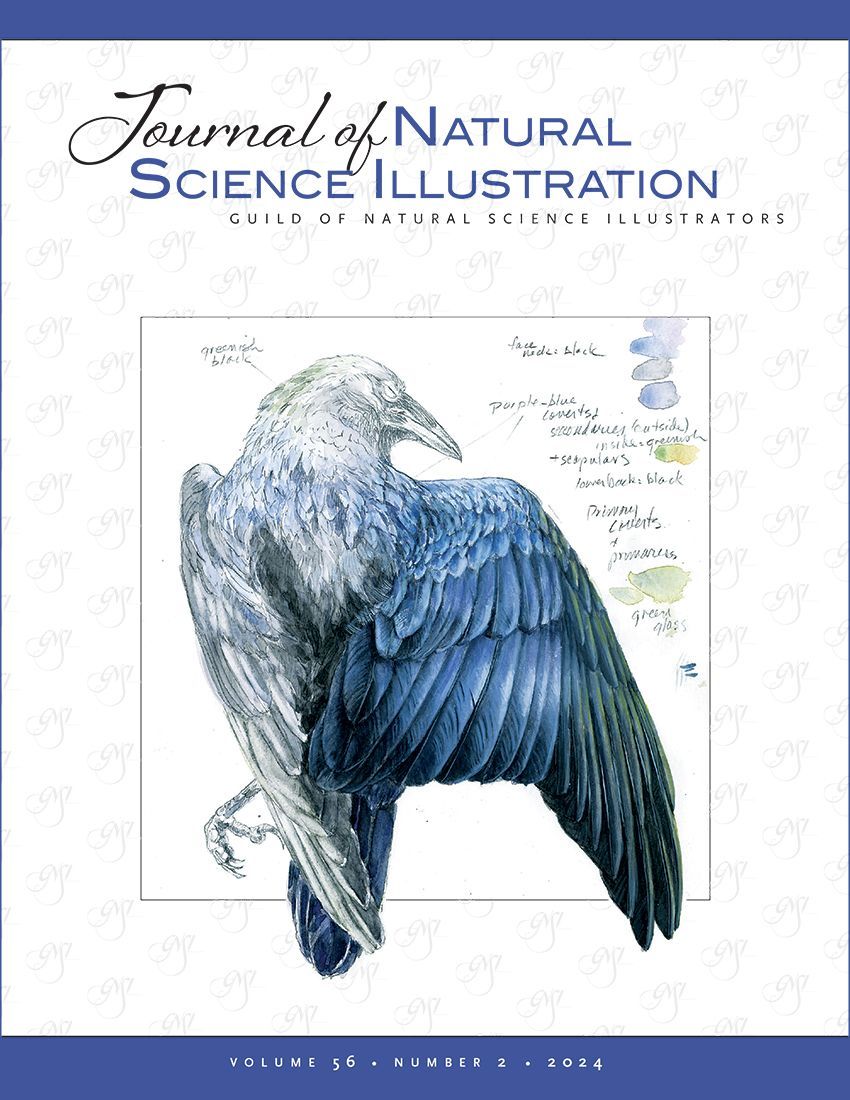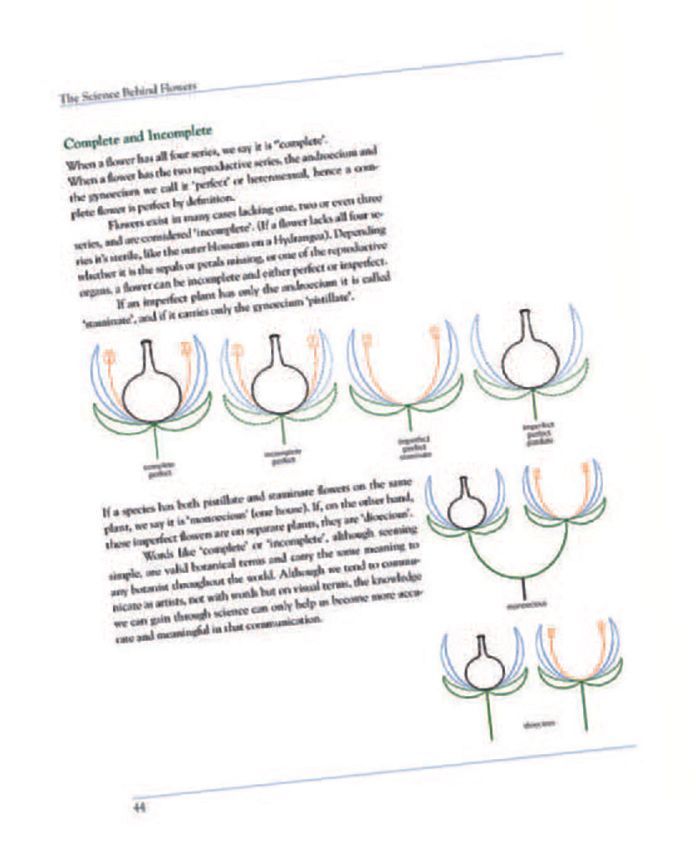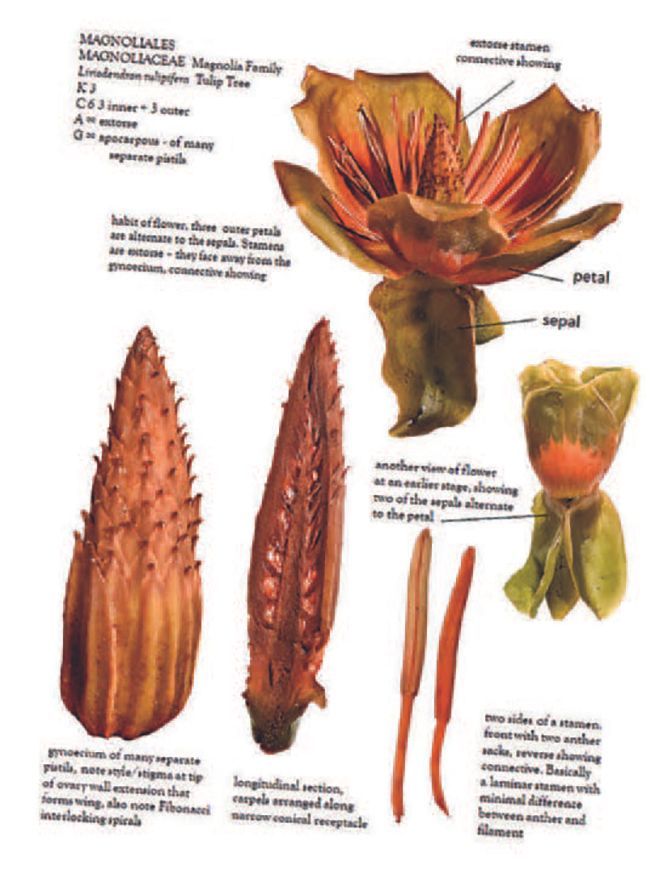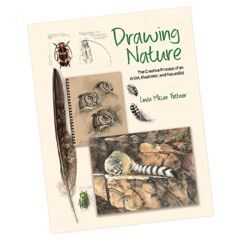Book Review: The Science Behind Flowers, by Dick Rauh
GNSI Past President, Dr. Dick Rauh, has written an invaluable reference book for those who love flowers, those who teach scientific and botanical illustration, and artists who want to deepen their knowledge of how plants work. The author is both an artist and a scientist, having earned a PhD in Plant Sciences at CUNY, and brings his knowledge of both disciplines to the format of the book.
The book is a visual feast, including the author’s beautiful paintings, examples of student notebook sketches, stacked dissection photography by Jeff Faulk, and numerous diagrams and charts to highlight the concepts presented in the text. The decision to include the stacked photos of the dissections is noteworthy. The author mentions in the introduction how he first came across stacked photos, which are photos taken in slices through the depth of the plant and stitched together to make a composite where everything is in focus. He discusses how photographs are different from botanical art, which inevitably reflects the intent and perceptions of the artist, and argues for the vital role of the artwork.
Arising from his Plant Morphology for Botanical Illustrators class at the New York Botanic Garden, the 184-page book is patterned after eight class sessions, based on his lecture notes and dissections. Thirty representative plant families are presented in the dissections in the book (he suggests using 24 in class, so there are extras if one is unavailable to the teacher).The book is divided into six chapters, with a helpful book list at the end.
Throughout the book, Rauh is attentive to the needs of teachers like himself. Tips for obtaining plant material are noted: some flowers freeze well and can be collected in season and preserved for a later class. Alternate plants for some of the dissections are also given, and there are notes regarding supermarket flower sources. Lilies, for example, often have the stamens removed, and stamens in carnations are often malformed.
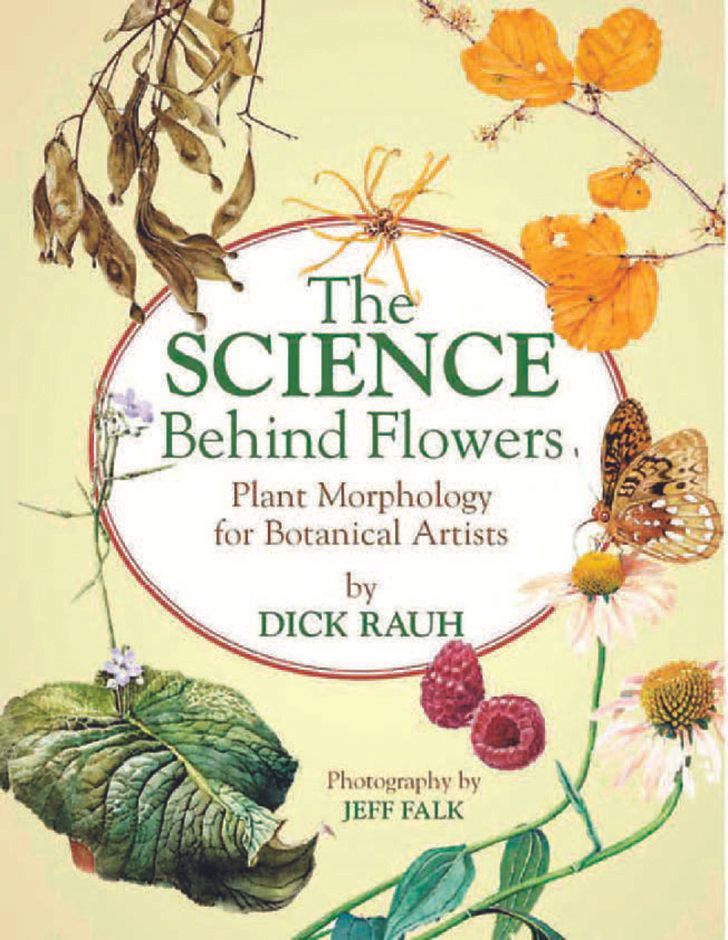
Book cover, The Science Behind Flowers. All illustrations © Dick Rauh, unless otherwise noted.
Chapter One, “Basics,” answers the question of how plants are organized. What is Plant Science? What are the parts of a flower, and how did they originate? What is the purpose of a floral dissection, and how should it be done? What is a floral formula? Beginning with the Magnolia family, Rauh shows how he leads his students to set up a notebook page, from habit drawings to dissections. The strikingly clear, stacked photographs with labels show the student what to look for during the dissection. Facing the photographs are drawings from student notebooks, which show a range of individual approaches to the study. Next, he moves through the Arum, Lily, Iris, and Orchid families, pointing out the differences in the floral formulae.
Chapter Two, “The Flower,” delves into the organization of floral structures. Complete and incomplete flowers are explained. Helpful diagrams of ovary position, placentation, and inflorescences are given and discussed in the text. The dissections include the Buttercup, Witch Hazel, Spurge, and Violet families.
Chapter Three, “The Big Picture,” addresses the position of the flowering plants in the overall classification
of plants, and delves into the fossil record and the current topics in plant taxonomy. Dissections in this chapter include the Willow, Pea, and Rose families.
Chapter Four, “Alternation of Generations, Double Fertilization, and Pollination,” is a lengthy chapter. Life cycles of ferns, mosses, and flowering plants are compared. There are very clear illustrations which lead the reader through what happens during fertilization and seed formation. Pollination is discussed; the author explains how scent, color, and form all contribute to the pollination of a plant. Dissections include the Begonia, Birch, Beech, and Geranium families.
Chapter Five, “Fruit,” introduces us to the classification of fruit. He devotes two class sessions to this topic, so the chapter contains seven possible dissections. Dr. Rauh mentions the shifts in terminology behind fruit nomenclature and his own approach to the topic. This is very helpful, because students may come across conflicting information in their reading, and it is good for them to be aware of the different schools of thought on the topic. Fleshy and dry fruits are covered, and the author’s beautiful illustrations of dry fruit are notable in this chapter. Dissections include the Mustard, Mallow, Maple, Pink, Pokeweed, Cactus, and Smartweed families.
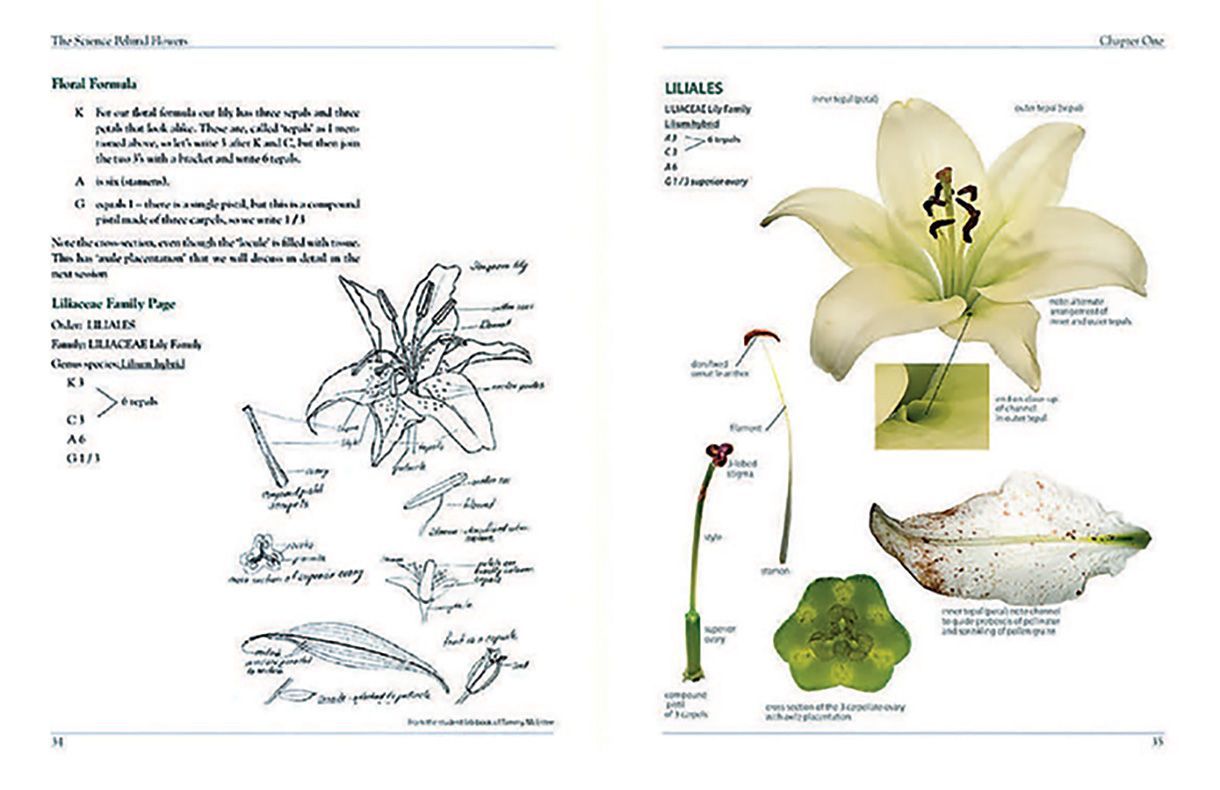
Lily pages, student drawing and stacked photography
Chapter Six, “Vegetative Morphology,” covers roots, stems, and leaves. Again, there are helpful illustrations to introduce topics such as storage organs, phyllotaxy, and leaf forms. Because he devotes two class sessions to the subject matter, the seven dissections in this chapter include the Dogwood, Heath, Nightshade, Plantain, Mint, Carrot, and Aster families.
The book list at the end is invaluable. I found old favorites listed, and some new books to investigate. It is important to note that the author intends his text to be used alongside a good botanical glossary. Attempting to define the large number of specialized terms used is outside the scope of this book, but students will need to know what the terms mean. Two comprehensive botanical glossaries are listed.
One suggestion I would make for future editions is the inclusion of an index. When questions arise in class, it would be helpful to know where information in the body of the text is located. I would also suggest expanding the table of contents to include the families included in the dissections.
The Science Behind Flowers is a much-needed text for botanical illustrators at any level. Teachers of botanical illustration, especially, will find it helpful to structure their classes and provide an engaging text for students to use in the classroom during dissections. I know from my own teaching experience that students are looking for this type of text to use in the classroom, having been asked to “put everything we talked about in class into a handout!” Rauh’s book is the answer to this problem and will be a welcome addition to my teaching materials.
This open-access article appears in the Journal of Natural Science Illustrators, Vol. 52, No. 3, 2020.
Share this post:
